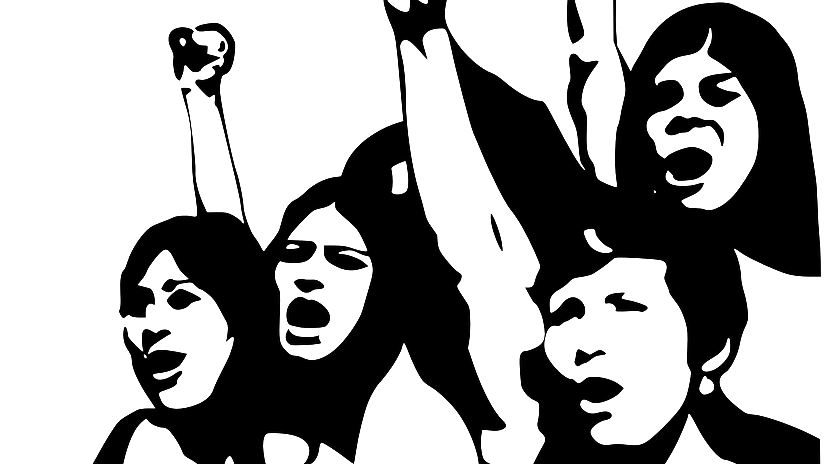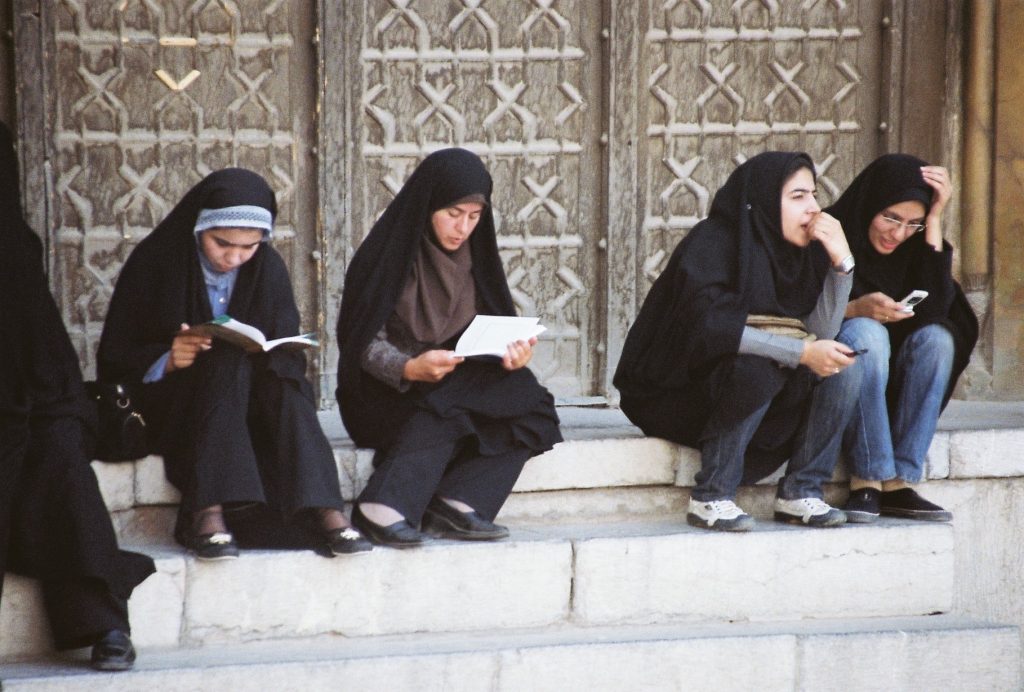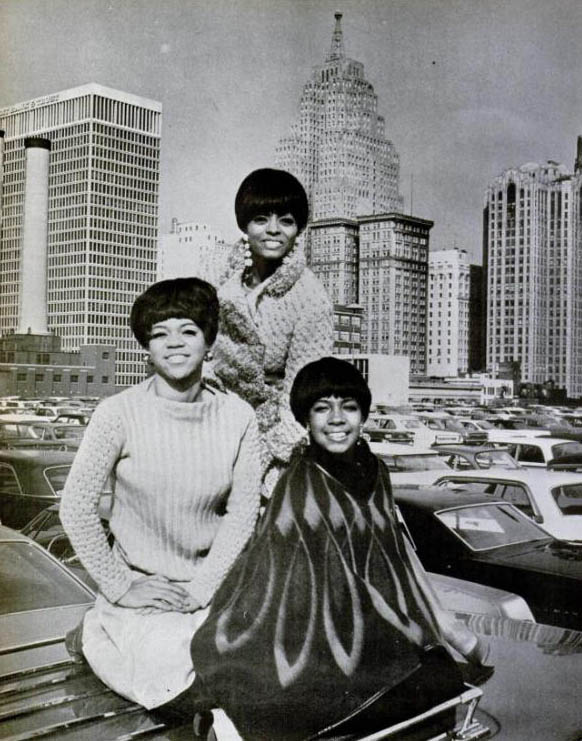I remember the day I had my first conversation about sex with my mother. The year was 1986. My mother and I were in the kitchen of our apartment, in Arad, Arad county, Romania. She was doing the dishes, and I was sitting at the kitchen table doing my high school homework. I had my own room, but sometimes I wanted company.
“Did you ever sleep with anyone before you got married?” I asked, casually. I don’t remember why I thought it was a good moment to ask. I must have seen American movies where mothers and daughters talked about sex and love, the mother usually telling the daughter that she was wonderful and could do anything she wanted with her life.
My mother put the plate down in the sink and turned off the water.
“What kind of a question is that!” She paused, as she was drying her hands.
“Listen, if you do that, when you get married your husband is going to ask endless questions about who you slept with… and he’ll never trust you. And even if you do it just one time, with just one person, he’ll think that every other man had slept with you, and he’ll keep asking questions about how you did it and with whom. You won’t see the end of it.”
She paused, to let her words sink. It went unsaid that the husband had the right to ask all those questions. Then she continued, in a softer voice:
“But just think about it for a moment, when you get married, think about the symbol, the white dress…the white flowers… wouldn’t you like all that to be true and not a lie?”
I didn’t care that much about the white dress and the flowers; they seemed more like a convention. It also crossed my mind that if my husband didn’t trust me, then perhaps I should find someone else? But then what if all men thought like that? That was possible. Soon I started listening more carefully to what people said, and it seemed that my mother was right: everybody believed that women could only be good wives or curve (whores), nothing in between, and it was up to them to choose their category very carefully.
I remembered this scene last year, when I heard that an American researcher had published a study that proved that women had better sex under socialism. I lived in a socialist country for the first eighteen years of my life, so it’s not without trepidation that I read the book. Its title contradicted everything I knew about socialism. But maybe, I kept hoping, the author (an ethnographer) had done oral history interviews, surveys, and other things of the kind, with tens if not hundreds of women, and the results proved indeed that, under socialism in Eastern Europe, women had better sex. (In the following, I will shorten Kristen Ghodsee’s rather long title, Why Women Have Better Sex Under Socialism, not as its complete acronym, WWHBSUS, which is rather long in itself, but as Better Sex.) The book is rather disappointing because it lacks original ethnographic research and overall misrepresents socialism; it also promotes a liberal version of feminism that fails to consider the lives of minority and poor women.
A professor of Russian and East European Studies at the University of Pennsylvania, Kristen Ghodsee argues in Better Sex that women enjoyed greater sexual freedom under socialism (more specifically, state socialism in Eastern Europe), and that socialist societies’ commitment to full employment for women allowed them financial independence and thus more leverage in their relationships with men. Unfortunately, this all ended in 1989 when capitalist propaganda duped them to participate in the social movements that ended state socialism. In the contemporary world, Ghodsee claims, Eastern European women are nothing but cheap commodities, their bodies available to the first comer who can afford their rather low price. Western women can learn from socialism that employment outside of the house and better social safety net (free childcare) can improve their lives, and yes, lead to better sex (with men).
I expected to learn something new about socialism from Better Sex, but in fact, ethnographic research (not by the author) about Eastern European women’s relationships under socialism does not appear until the fifth chapter, and the research proving that women had better sex is at best uneven—three books for East Germany; one twenty-page article for the whole Soviet Union; another article for Hungary, but the reference is missing; one for Czechoslovakia that claims the opposite of the author’s argument, etc. Eastern European women themselves get to speak on the topic exactly three times in the whole book (one woman because she told Ghodsee that she had “nailed it”). For those who expect to learn something about what socialist feminism might look like in this day and age, the book disappoints again. Like in so many contemporary debates about socialism, Ghodsee quickly veers toward how the Nordic European countries do it right, although their social system is in fact corporatist with a strong welfare state, and not socialist. The author simply uses the sex lives of Eastern European women to spice up an old-fashioned argument that comes straight from the playbook of white liberal feminism, namely that women’s employment and the welfare state can improve their lives. In the process, Eastern European women are sexualized, objectified, and silenced.
The book’s main argument goes like this: “In countries such as Poland, Hungary, Czechoslovakia, Bulgaria, Yugoslavia, and East Germany, women’s economic independence translated into a culture in which personal relationships could be freed from market influences. Women didn’t have to marry for money.” (9) According to Ghodsee, this means that women had more power under socialism.
This is not necessarily so. Under socialism, not just personal relationships, but everything was freed from market influences, as incomes were largely similar: a general manager of a factory that employed two thousand people brought home about the same paycheck as a miner working in dangerous conditions. There was no real economic inequality to speak of, and, in general, accumulating capital didn’t make much sense. Banks were centralized and any deposit beyond what could be expected from a monthly salary was viewed with suspicion as potentially the result of black-market activity. Which, in many cases, it was. There was no free enterprise, with the exception of very small businesses (such as daycares). Citizens of socialist countries had no legal sources that allowed them to accumulate money (capital) in any significant way.
Yet women still lacked power compared to men, and could, and in fact did, marry or trade sexual favors for other things that could be gained or lost in a society where incomes didn’t differ that much: a (better) state apartment, a few spots up a waiting list for a telephone or car or washing machine, a passport to travel abroad, goods illegally brought in from the West, transfer to a larger city or to a less difficult job. Such stories are well-documented in countless novels and films from the socialist era, which attempted to cast ethical dilemmas in terms that made sense at that time. But Ghodsee’s book fails to consider any of these rather obvious and easily available sources.
I remember the books and movies of the socialist era well because this is what I read and watched during the first eighteen years of my life. I grew up going to marches, participating in staged events, and singing patriotic and revolutionary songs. I did that with various degrees of conviction, which plummeted by the time I reached high school. I began to understand them as a boring and time-consuming chore, and, even worse, a cynical lie. Nobody organized the 1989 anti-communist protest where I went together with my mother and my thirteen-year-old brother. Yet, in those tense, exhilarating, fearful hours when we stood facing tanks in front of City Hall, shouting slogans such as “Down with Ceausescu!,” “God Is with Us,” and “The Army Is with Us,” sharing bread from the local factory with other protesters, workers who had left their shifts, and even soldiers standing by the armored vehicles—all the staged, choreographed, and alienating events of the past were washed away by a new, intoxicating hope that we could transform ourselves, stop lying, claim power over our own lives. The future appeared dazzling with possibility, limitless in its potential.
This is the moment, in my life and in the lives of millions of Eastern Europeans, that Ghodsee chooses to ridicule by arguing that we were duped by capitalist propaganda, naïve enough to hope for “a new consumer Xanadu of unlimited Levi’s jeans and Cacharel perfumes” (158). This misses the point. We were not duped by capitalism and didn’t desire exploitation, and a lot of us saw Western consumerism as both shallow and wasteful. It’s more because of our poverty and powerlessness than our intelligence that in the end all we got in Eastern Europe was neoliberal capitalism. After all, even American citizens, empowered, enlightened individuals, have been unable to stop its ruthless progress.
But for Ghodsee and other Western writers to continue their work unchallenged, Eastern Europeans need to be cast as naïve and unknowing. More generally, the condescension of many Western writers toward East Europeans has no visible limits. In 2016, the literary magazine Granta published an issue about Eastern Europe. It was titled “No Man’s Land.” When I saw it, I felt like screaming, “My mother lives there, in her socialist-era apartment! She’s retired! She drives a new although very tiny Toyota!” Another example: the novel Prague (2013), narrating the lives of American and Canadian expats and completely detached from its local environment—the novel is, in fact, set in Budapest. Only a handful of Hungarians make brief appearances in the novel, and they’re caricatured side characters, the women readily available sexually. Or here’s Philip O Ceallaigh, in an essay about Bucharest—generously titled “Bucharest, Broken City”—writing about a Romanian woman who had expressed a positive view of socialism: “Only information of the hard sort has a chance of penetrating this kind of mental fog.” Similarly, Ghodsee feels entirely comfortable chastising a Czech woman who had disagreed with her in a private letter. The woman, born in the 1940s in Czechoslovakia, offered an account of socialism that was less than glowing. But Ghodsee does not hesitate to reprimand the woman, explaining to her that she had enjoyed a “luxurious” routine, and failed to realize “the extent of her privilege” (Ghodsee 64). Clearly, in Better Sex, Eastern European women can’t be trusted to tell stories about their own lives or feelings, and definitely not about socialism—unless they’re cheerleaders for Ghodsee, that is. Two other women from Eastern Europe are briefly quoted in Better Sex. One is a Bulgarian woman who once posted on Facebook that her mother had lots of great sex during socialism and wanted her to do the same; the other a Russian émigré who wrote an email to congratulate Ghodsee for how she had “nailed it” in an article.
Like other Western researchers, Ghodsee has no problem ignoring our opinions about our own history. In her account, based on arbitrarily picked sources, we’re ruthlessly sexualized, without exception:
“Women in Eastern Europe are once again commodities to be bought and sold—their price determined by the fickly fluctuations of supply and demand… Today, Russian mail order brides, Ukrainian sex workers, Moldovan nannies and Polish maids flood Western Europe. Unscrupulous middle men harvest blond hair from poor Belorussian teenagers for New York wig makers. In Saint Petersburg, women attend academies for aspiring gold diggers. Prague is an epicenter of the European porn industry. Human traffickers prowl the streets of Sofia, Bucharest, and Chisinau for hapless girls dreaming of a more prosperous life in the West.” (Ghodsee 12)
Clearly, we need a Western woman to speak for us.
This is how Ghodsee depicts herself: “In the 1990s, while I was off teaching English and reading Karl Polanyi in Japan…” (49); “As someone who is often critical of reductionist economistic models….” (115) Or, when sharing stories about her personal life: “For a long time, it bothered (and later fascinated) Ken that I didn’t conform to his idea of what women want… But many years later, as I dug into the scholarship on the relationship between women’s economic independence and sexuality…” (128) In other words, Ghodsee freely travels and studies around the world; Eastern European women have to marry for visas. Ghodsee challenges and appears fascinating to (Western) men, for whom Eastern European women are nothing but commodities; Ghodsee is liberated, Eastern European women attend “golddigger academies”; she is an intellectual and a scholar, while we can only be consumed as bodies with no brains attached or studied as examples of capitalism run amok. Rarely are we quoted as writers or thinkers, as narrators of our own stories. If Ghodsee strongly feels that she has to write about the sex lives and relationships of Eastern European women, can she at least dignify us with a modicum of interest and spend a tiny bit of time reading what contemporary Eastern European women themselves, as poets and novelists, have written about love and, yes, even sex, during socialism and after?
And it’s not just women from Eastern Europe who might have something to say about socialism. Better Sex, while claiming to be about socialism in general, is strictly Eurocentric and entirely ignores socialist societies in Asia or Latin America or postcolonial African nations. And just as Ghodsee claims to write about socialism, but only refers to socialism in (Eastern) Europe, when she writes about women, she means ethnic majority, educated women, for whom gender is the only axis of oppression. Ghodsee’s feminism, of course, is white feminism, namely the type of feminism that sees gender oppression as the only oppression that women face and that centers the experiences of white (or ethnic majority women) as the female experience in general. We don’t hear anything anywhere in Better Sex about Eastern European women who are Muslim or Roma, from other ethnic or religious minorities, or living in rural areas. And even in the many pages that Ghodsee dedicates to western societies, race, class, immigrant status, or even sexuality are rarely if ever mentioned.
And as it often happens in white Western feminism, a book that purports to be about the experiences of other women has to include long and uninteresting paragraphs about its author’s life. Tens of pages are dedicated to Ghodsee’s stories of learning about the USSR in high school at the Model United Nations, to a backpacking trip that she took thirty years ago through Eastern Europe, and to vignettes about herself and her friends, usually placed at the beginning of each chapter, examples somehow related to women and socialism. One of Ghodsee’s friends, we learn, a homemaker, has to sleep with her husband in order to receive money from him to shop at the Shiseido counter at the mall—clearly, one of the major tragedies of our time. (The characters in the other vignettes seem equally disconnected from the problems that most Americans will face in their lives.)
Ghodsee’s white Western feminism is at its most typical when, like it often happens in discussions of socialism, the conversation veers toward Northern Europe, which, according to Better Sex “… is not only the happiest place to live in the world but an oasis for women who enjoy more economic and political power than anywhere else on the planet.” Again, it depends which women we’re talking about: Eastern Europeans women migrants (many of them Romani, who migrate with their families) often have to live in makeshift camps in public parks, heated by campfires, usually for short periods of time until local governments pass ordinances and force them to move. Not every woman can benefit from “the country’s general social safety net and gender equalizing policies.” (Ghodsee 17) Or perhaps they do. Poor Eastern European women, many of them Romani, trying to survive in Norway, are just as able to sleep on the streets as their men. Some gender equalizing.
Romani women’s experiences are completely erased in Ghodsee’s book. Ghodsee quotes the example of Czechoslovakia in her book as one of the places where women had better sex under socialism, yet never mentions that hundreds, if not thousands, of Romani women were sterilized without consent in that country beginning in 1972. One can’t really make a general argument about how women have better sex in socialist states without addressing this issue… but then, just like the real stories of women from Eastern Europe, Romani women simply don’t count for Ghodsee.
The reason why Better Sex feels so disappointing is that at a very fundamental level, I agree with Ghodsee. We really need a nuanced, historically informed post-Cold War debate about socialism. But Better Sex is a poor start. In fact, Better Sex is simply the newest iteration in the long list of reenactments of the Cold War-era kitchen debate. On July 24, 1959, Nixon and Khrushchev met at the American National Exhibition in Moscow and ended up briefly discussing whether women’s lives were better under socialism or capitalism. Nixon argued that Western women enjoyed consumer choices and labor-saving devices. Khruschev defended Soviet women. With books like Better Sex, sixty years later, we’re still in that kitchen, still rehearsing the same old debate, except that, instead of Khrushchev speaking for Soviet women, it’s now Ghodsee writing about Eastern European women. I don’t see this as progress.
But here’s an idea: let’s do something revolutionary, new, and unprecedented. After sixty years, let’s declare the debate over and retire the sophomore-level assignment question (“Are women’s lives better under capitalism or socialism?”). Let’s have a discussion about women’s lives under socialism, led by the very people who have never had a chance to tell everyone how they felt. Let’s listen to Eastern European women’s stories about socialism, the capitalist transition, capitalism in the West, let them try to tell us what it means to be an immigrant from that region here, in the United States.
Because we are here. There more than two millions of Eastern European immigrants living in the United States, by the latest census, as our numbers have fast increased since the 1990s. Like all immigrants, we’re poor. We struggle to learn English. We’re hotel cleaners and food servers, home aides and contractors, physical trainers and, more rarely, nurses, doctors, professionals. We’re never professors of East European Studies.
And we all struggle with the complex histories of socialism and what came after. Our bodies carry the legacy of the socialist era—Chernobyl, remember? “We heard about it/on Radio Free Europe,” starts the poem “Chernobyl Days” by Claudia Serea. At her high school, weeks later, students were given two iodine pills, but children continued to play outdoors and eat fresh fruit from the marketplace. I don’t think my high school distributed anything, not that it mattered; I’ll have to take thyroid medication for the rest of my life. Socialist governments could dole out vacations and paid leaves, materials goods when they had them, and guaranteed employment. They could also be extremely callous toward human life, and they encouraged private citizens to spy on their family members, neighbors, friends, and coworkers. (How’s that for better sex?). And yet many of us are just as critical of neoliberal capitalism, the very reason why our families are now spread all over the world, in three or four different countries, why we’re not at home anywhere on this planet, why we’re poor everywhere we go. This is my generation’s doubtful privilege: we’ve experienced powerlessness in three different societies: socialist, postsocialist, and as immigrants in the West.
But these are experiences we share with other immigrants and minorities, and maybe we can all have a truly transnational and intersectional debate about socialism, one that includes race in the picture, one led by women from around the world who have experienced the ways in which socialism both liberated and failed us. We can go, in fact, beyond a white liberal version of feminism and imagine our future differently. But then our vision of socialism will be global and not Eurocentric, intersectional and not white, and owned by the very women in whose life this vision is rooted.




